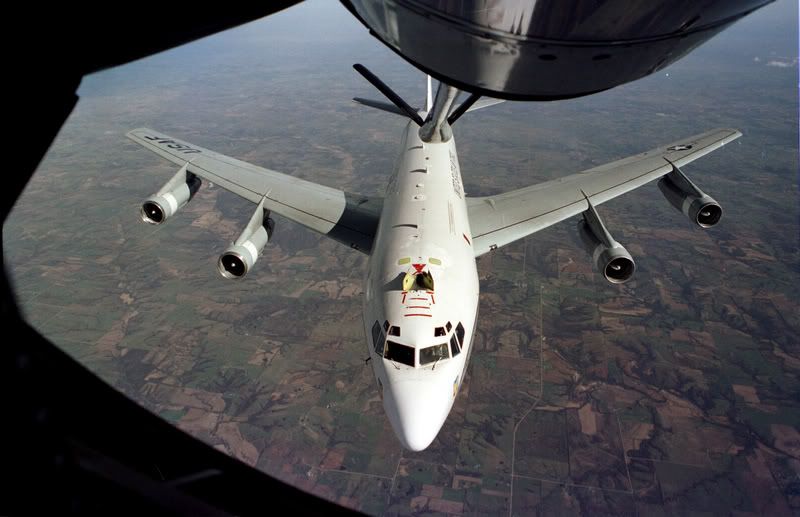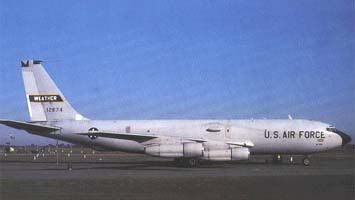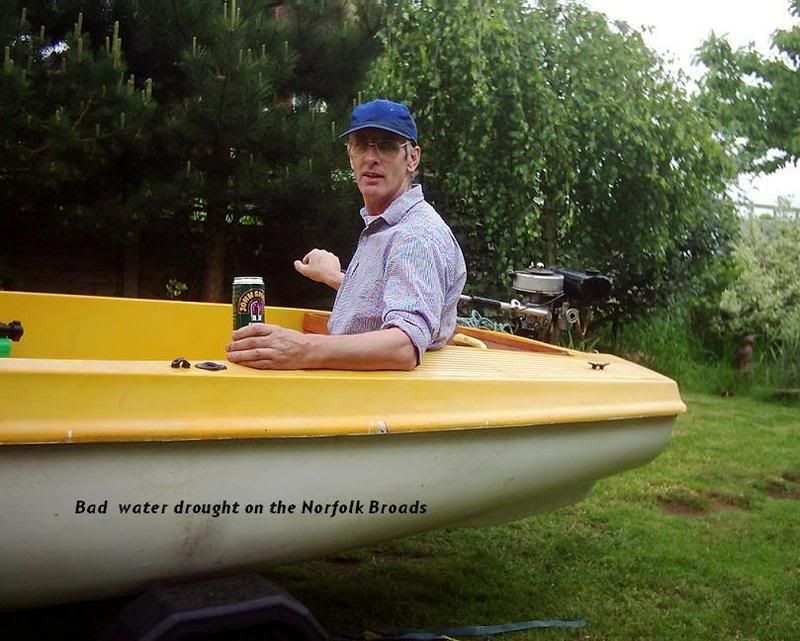Post by bobdawkins on Dec 23, 2006 22:55:23 GMT
Here you are chaps, first new texture for to start off 2007, ;D he, he, anyway thought it might be a good one  (something to think about aye
(something to think about aye  ) only joking but just as interesting as Rivet Joint etc
) only joking but just as interesting as Rivet Joint etc
U.S. Air Force Fact Sheet
WC-135 CONSTANT PHOENIX


Mission
The WC-135W Constant Phoenix atmospheric collection aircraft supports national level consumers by collecting particulate and gaseous effluents and debris from accessible regions of the atmosphere in support of the Limited Nuclear Test Ban Treaty of 1963.
Features
The aircraft is a modified C-135B. The Constant Phoenix’s modifications are primarily related to its on-board atmospheric collection suite, which allows the mission crew to detect radioactive "clouds" in real time. The aircraft is equipped with external flow-through devices to collect particulates on filter paper and a compressor system for whole air samples collected in holding spheres.
The interior seats 33 people. The cockpit crew is from the 45th Reconnaissance Squadron at Offutt AFB, Neb., and special equipment operators are assigned to the Air Force Technical Applications Center at Patrick AFB, Fla.
Background
General Dwight D. Eisenhower commissioned the Constant Phoenix program on Sept. 16, 1947 when he charged the Army Air Forces with the overall responsibility for detecting atomic explosions anywhere in the world. In September 1949, a WB-29 flying between Alaska and Japan detected nuclear debris from Russia’s first atomic test--an event thought not possible until mid-1950.
Beginning in August 1950, WB-50 aircraft were converted for the air-sampling mission over a two-year period. WC-135 aircraft began replacing the WB-50s in December 1965 and became the workhorse of the atmospheric collection program.
Air sampling missions were routinely conducted over the Far East, Indian Ocean, Bay of Bengal, Mediterranean Sea, the Polar regions, and off the coasts of South America and Africa. The WC-135W played a major role in tracking radioactive debris from the Soviet Union’s Chernobyl nuclear plant disaster. Currently the air-sampling mission supports the Limited Nuclear Test Ban Treaty of 1963, which prohibits any nation from above ground nuclear weapons testing. The WC-135W is currently the only aircraft in the inventory conducting air-sampling operations.
General Characteristics
Primary function: Air sampling and collection operations
Contractor: Boeing Aerospace
Power Plant: Four Pratt & Whitney TF33-P-5 turbofans with thrust reversers
Thrust: 16,050 pounds each engine
Length: 139 feet, 11 inches
Height: 42 feet
Wingspan: 130 feet, 10 inches
Speed: 350 Knots Indicated Air Speed
Ceiling: 40,000 feet
Maximum Takeoff Weight: 300,500 pounds
Range: 4,000 nautical air miles (Unlimited with air refueling)
Crew: Varies with mission
Date Deployed: December 1965
Inventory: Active force, 1; ANG, 0; Reserve, 0
Good one innit with info as well ain't I good
 (something to think about aye
(something to think about aye  ) only joking but just as interesting as Rivet Joint etc
) only joking but just as interesting as Rivet Joint etcU.S. Air Force Fact Sheet
WC-135 CONSTANT PHOENIX


Mission
The WC-135W Constant Phoenix atmospheric collection aircraft supports national level consumers by collecting particulate and gaseous effluents and debris from accessible regions of the atmosphere in support of the Limited Nuclear Test Ban Treaty of 1963.
Features
The aircraft is a modified C-135B. The Constant Phoenix’s modifications are primarily related to its on-board atmospheric collection suite, which allows the mission crew to detect radioactive "clouds" in real time. The aircraft is equipped with external flow-through devices to collect particulates on filter paper and a compressor system for whole air samples collected in holding spheres.
The interior seats 33 people. The cockpit crew is from the 45th Reconnaissance Squadron at Offutt AFB, Neb., and special equipment operators are assigned to the Air Force Technical Applications Center at Patrick AFB, Fla.
Background
General Dwight D. Eisenhower commissioned the Constant Phoenix program on Sept. 16, 1947 when he charged the Army Air Forces with the overall responsibility for detecting atomic explosions anywhere in the world. In September 1949, a WB-29 flying between Alaska and Japan detected nuclear debris from Russia’s first atomic test--an event thought not possible until mid-1950.
Beginning in August 1950, WB-50 aircraft were converted for the air-sampling mission over a two-year period. WC-135 aircraft began replacing the WB-50s in December 1965 and became the workhorse of the atmospheric collection program.
Air sampling missions were routinely conducted over the Far East, Indian Ocean, Bay of Bengal, Mediterranean Sea, the Polar regions, and off the coasts of South America and Africa. The WC-135W played a major role in tracking radioactive debris from the Soviet Union’s Chernobyl nuclear plant disaster. Currently the air-sampling mission supports the Limited Nuclear Test Ban Treaty of 1963, which prohibits any nation from above ground nuclear weapons testing. The WC-135W is currently the only aircraft in the inventory conducting air-sampling operations.
General Characteristics
Primary function: Air sampling and collection operations
Contractor: Boeing Aerospace
Power Plant: Four Pratt & Whitney TF33-P-5 turbofans with thrust reversers
Thrust: 16,050 pounds each engine
Length: 139 feet, 11 inches
Height: 42 feet
Wingspan: 130 feet, 10 inches
Speed: 350 Knots Indicated Air Speed
Ceiling: 40,000 feet
Maximum Takeoff Weight: 300,500 pounds
Range: 4,000 nautical air miles (Unlimited with air refueling)
Crew: Varies with mission
Date Deployed: December 1965
Inventory: Active force, 1; ANG, 0; Reserve, 0
Good one innit with info as well ain't I good



